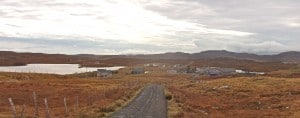 We’re working with Falkland Estate in Fife – home of the Centre for Stewardship – on estate visioning and master planning. Today we helped host a visit from the Scottish Government’s Rural Affairs, Climate Change and Environment committee (RACCE). The visit was part of the committee’s land reform fact-finding tour, which is working its way around the country. In a brief presentation, we explained the importance of long term spatial planning and visioning for estates and large land holdings or sites.
We’re working with Falkland Estate in Fife – home of the Centre for Stewardship – on estate visioning and master planning. Today we helped host a visit from the Scottish Government’s Rural Affairs, Climate Change and Environment committee (RACCE). The visit was part of the committee’s land reform fact-finding tour, which is working its way around the country. In a brief presentation, we explained the importance of long term spatial planning and visioning for estates and large land holdings or sites.
At Falkland, we’re effectively merging the PAN 83 urban master planning model we’ve applied for private estates at Bowmore, Inveraray and Forres recently, with the feasibility model for community land ownership studies at Culbokie, Lochmaddy and Great Bernera (working with Dr Calum MacLeod’s team).
The aim is to facilitate sustainable land management. The model works for both private and community land ownership. It’s as good an indication as any that the landowner is committed to sustainable use of the land.
These days, there’s a statutory requirement for major planning applications to be accompanied by a Design Statement (see PAN 68). Quality of place is a high priority for the Scottish Government, with cross-party support. The requirement for a Design Statement reflects this. It’s still disappointing that many Design Statements are accepted by planning authorities despite being half-hearted box-ticking exercises, but that’s another blog….
Like quality of place, the Scottish Government has made land reform a priority. Again, there’s broad cross-party support (with the exception of the Conservatives, who take a more cautious position). One aspect of the current Land Reform (Scotland) Bill 2015, is the contentious matter of sustainable land use and the potential for communities to be granted rights to purchase land which is not being used sustainably.
At this stage, it’s unclear what that means. What mechanisms might the Scottish Government apply to define sustainable land use? How might land owners illustrate a commitment to sustainable use? If a Design Statement proves a commitment to quality place making, could an estate master plan or vision do the same for sustainable land use?
We think so.
A document similar to PAN 68 could set out advice on preparing a Sustainable Land Use Plan (SLUP!) and encourage land owners to follow best practice and prepare their own. The forthcoming Land Reform (Scotland) Act could explain the scenarios where the proposed Scottish Land Commission might request a SLUP as evidence of effective land management.
There’s an obvious resource issue in rolling out this kind of study but our experience suggests that it proves cost effective by unearthing investment opportunities, financial efficiencies and greatly enhanced relationships with stakeholders and communities. That applies to land in private or community ownership.
Land reform may be a polarising issue, but most people seem to agree that sustainable land use is a valid ambition. A tool like SLUP can add value across the spectrum. Why wouldn’t we use it?
